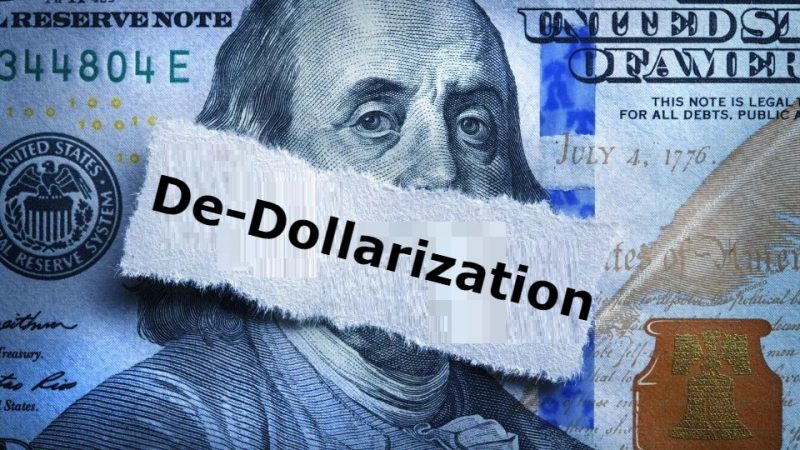The BRICS alliance kick-started the de-dollarization agenda to pull the US dollar down from the global reserve status and replace it with local currencies. China and Russia were on a world tour convincing developing countries to use local currencies for trade and not the US dollar. They found success in it as several developing countries are considering the de-dollarization initiative to strengthen their local currencies.
Also Read: Wages in the US Rise 7%, Home Prices Skyrocket 45%
The US pressing sanctions on developing nations is another reason why they find the de-dollarization agenda lucrative. Read here to know how many sectors in the US will be affected if BRICS ditches the dollar for trade.
Also Read: BRICS To Announce Membership of New Countries in 2024
De-Dollarization Faces Challenges: US Dollar Outshines All BRICS Currencies


The de-dollarization initiative has fallen flat as the US dollar hammered all local currencies of BRICS nations. The DXY index, which measures the strength of the US dollar shows the currency trading around the 106.27 level. That’s a robust surge from its low of 101.8 during January this year.
Also Read: BRICS Supports Cryptocurrency for Global Trade, Not US Dollar
The US dollar bulldozed all BRICS currencies one after the other reaching the top spot in the foreign exchange market. Firstly, the Chinese Yuan fell to its five-month low against the US dollar and is now at 7.24 in the charts.
Secondly, the Indian Rupee fell to an all-time low against the USD at 83.63 early this week. However, it briefly surged on Friday reaching 83.54. Finally, the Russian Ruble collapsed below 100 against the dollar and is now at 94.15.
Also Read: BRICS Calls For Middle East to Ditch US Dollar
In addition, the US dollar hammered the Japanese Yen making it fall to its 1990 low. The Japanese Yen is the weakest currency along the lot and is struggling to compete with the USD. The mighty dollar also weakened the Pound Sterling making it reach $1.25, a four-month low. In conclusion, the US dollar is wreaking havoc on all BRICS local currencies despite growing threats of de-dollarization.





